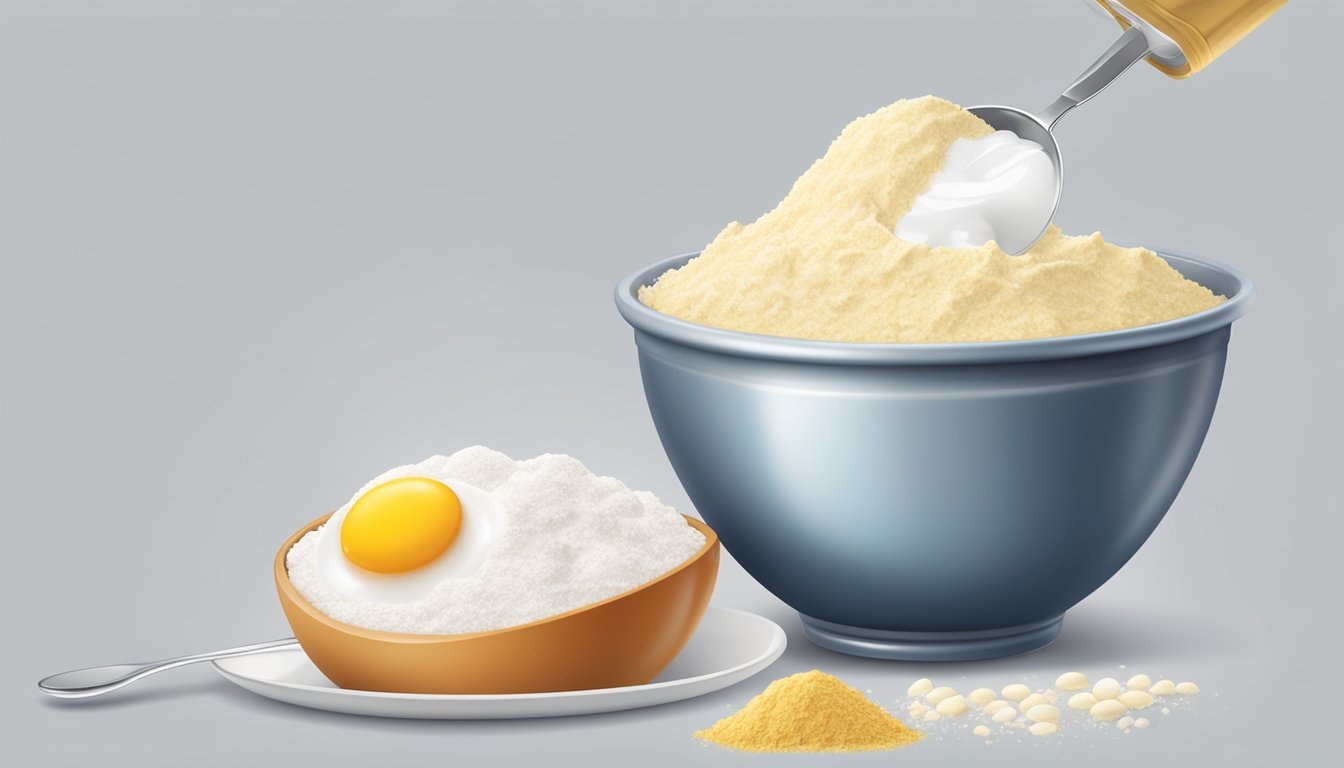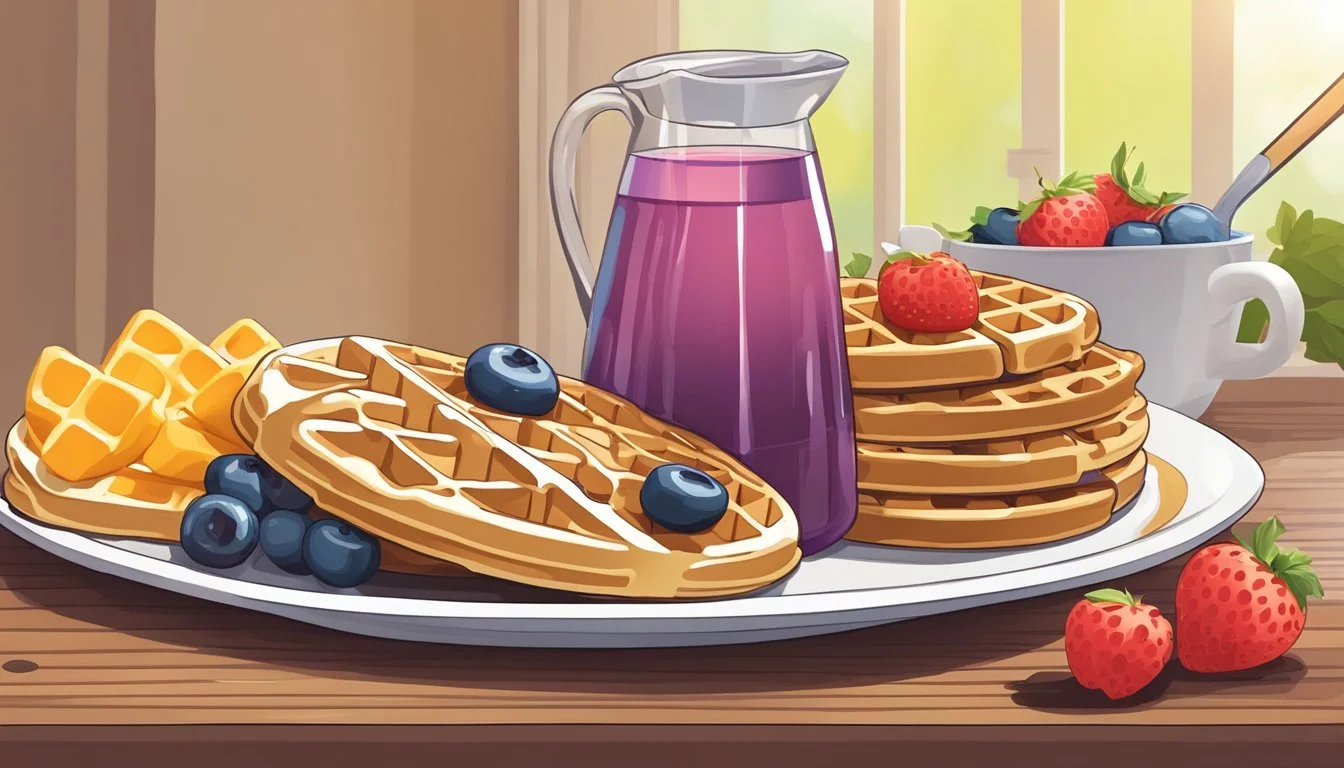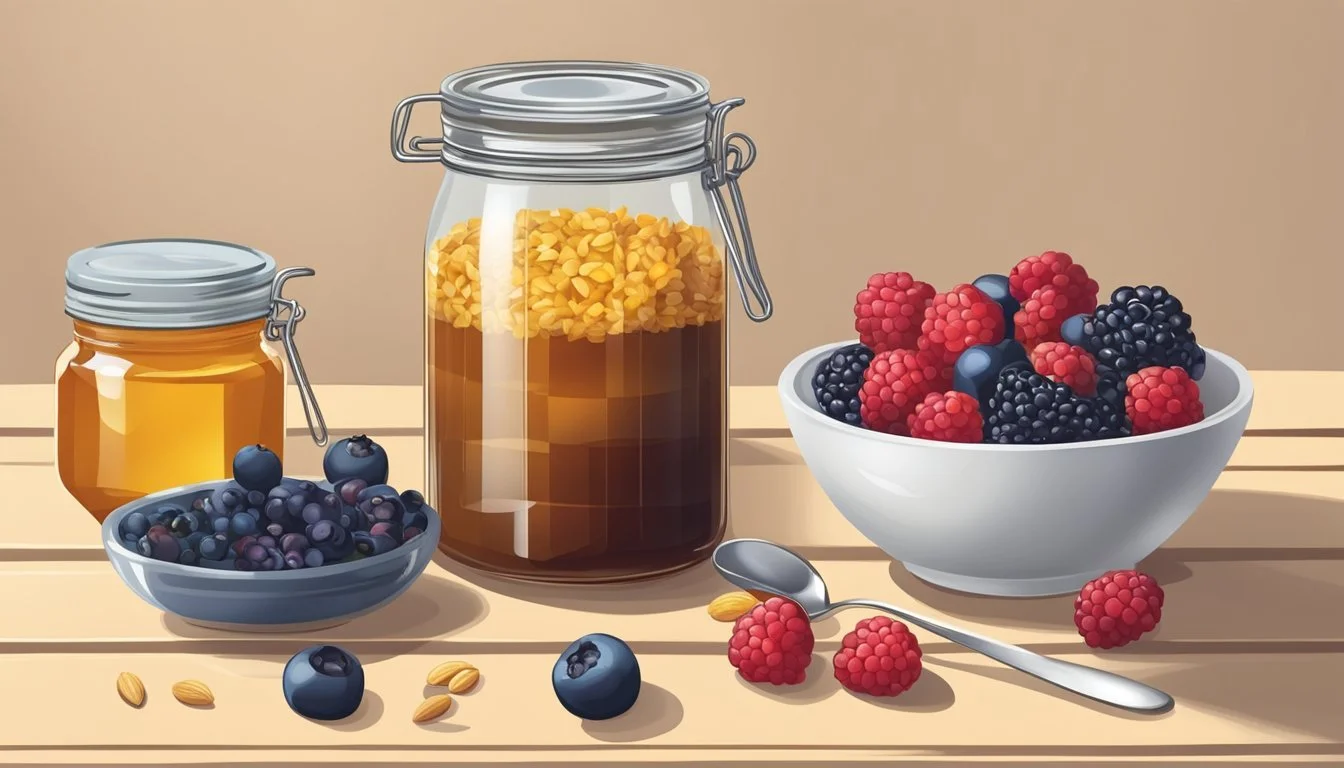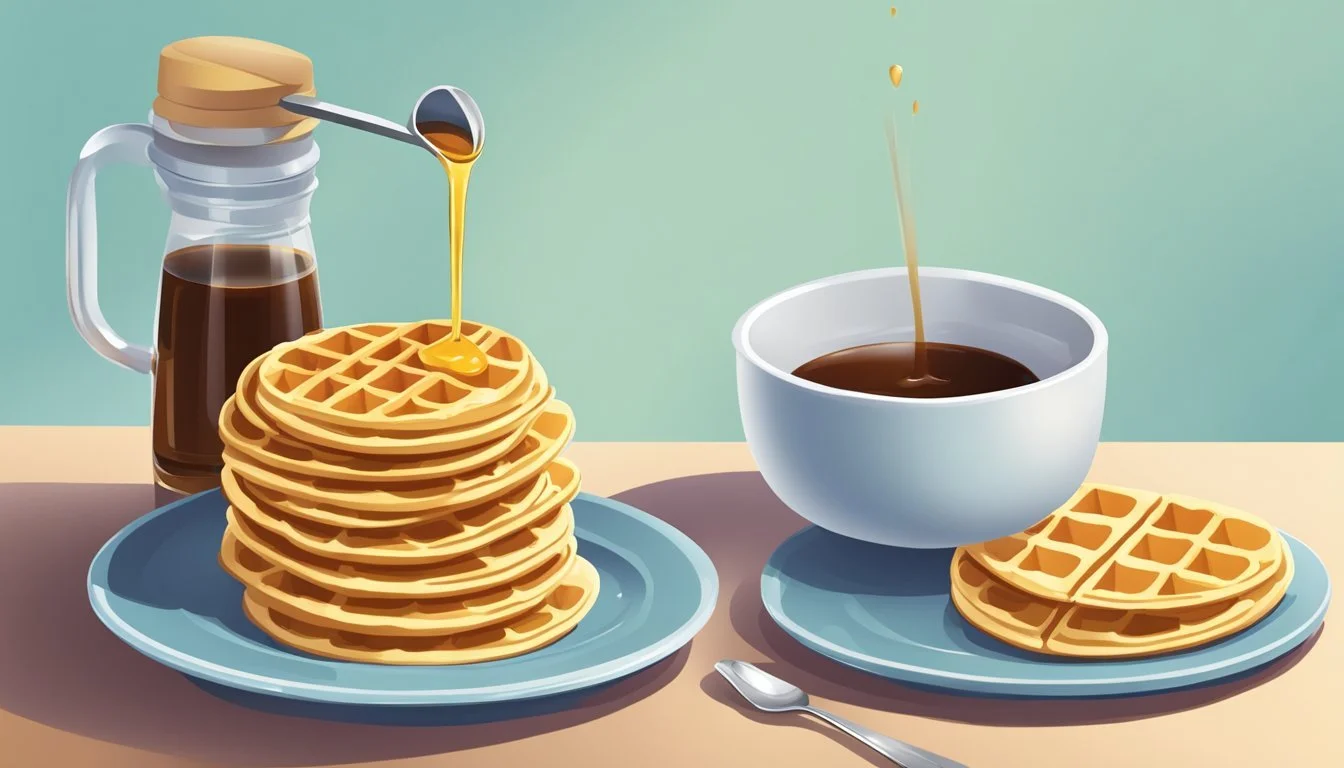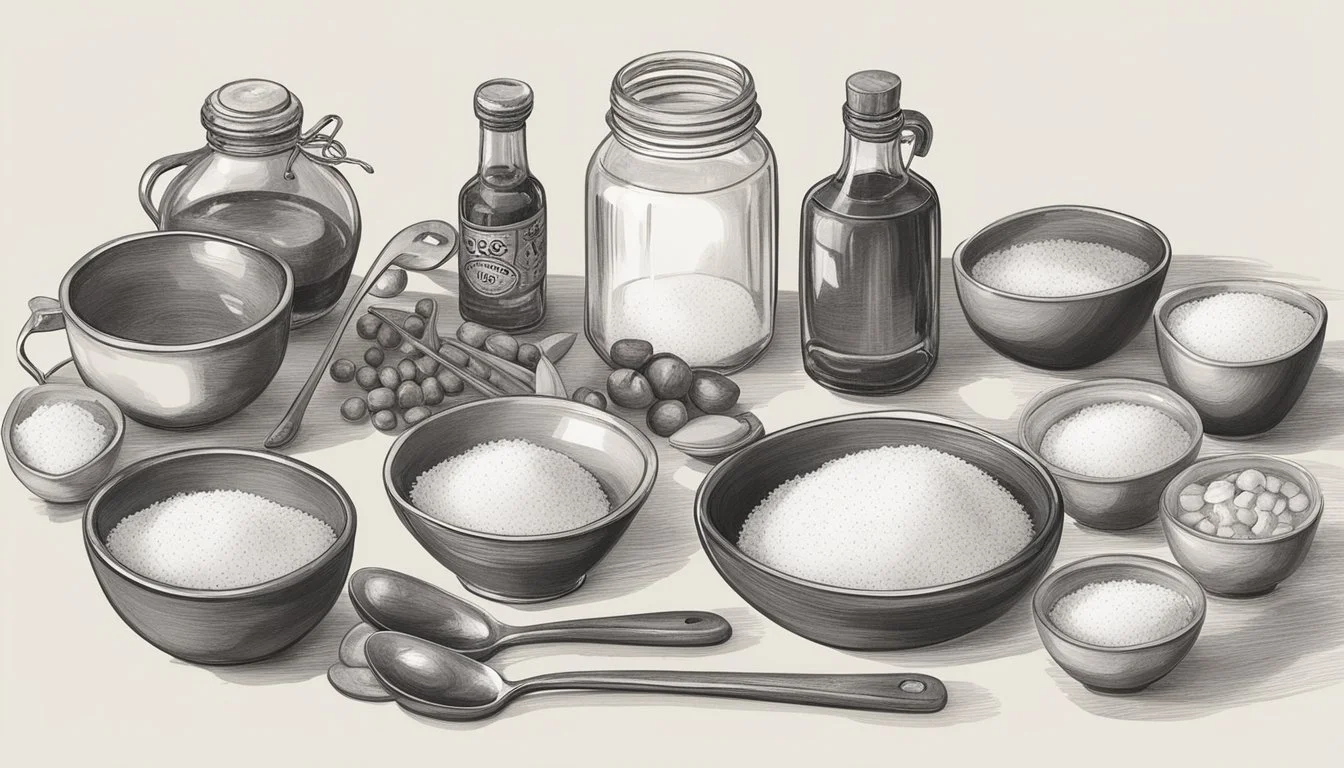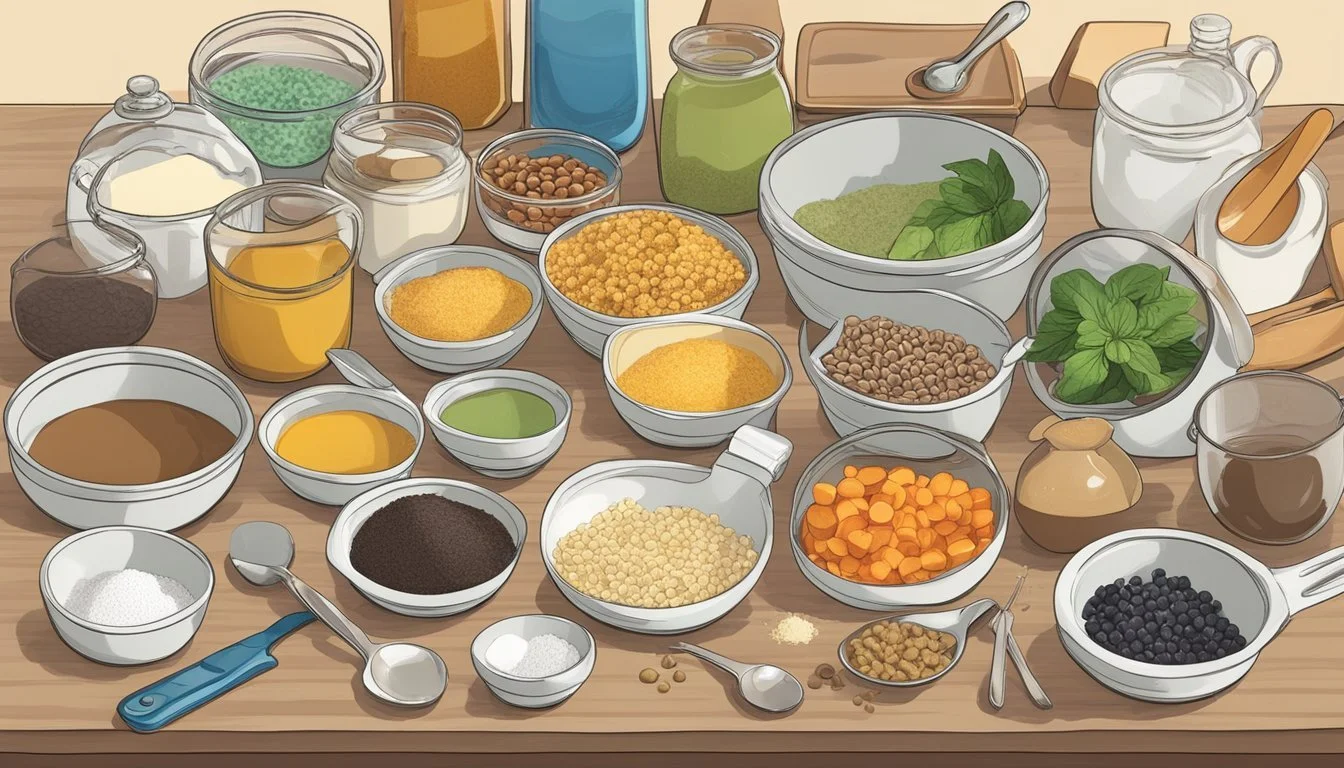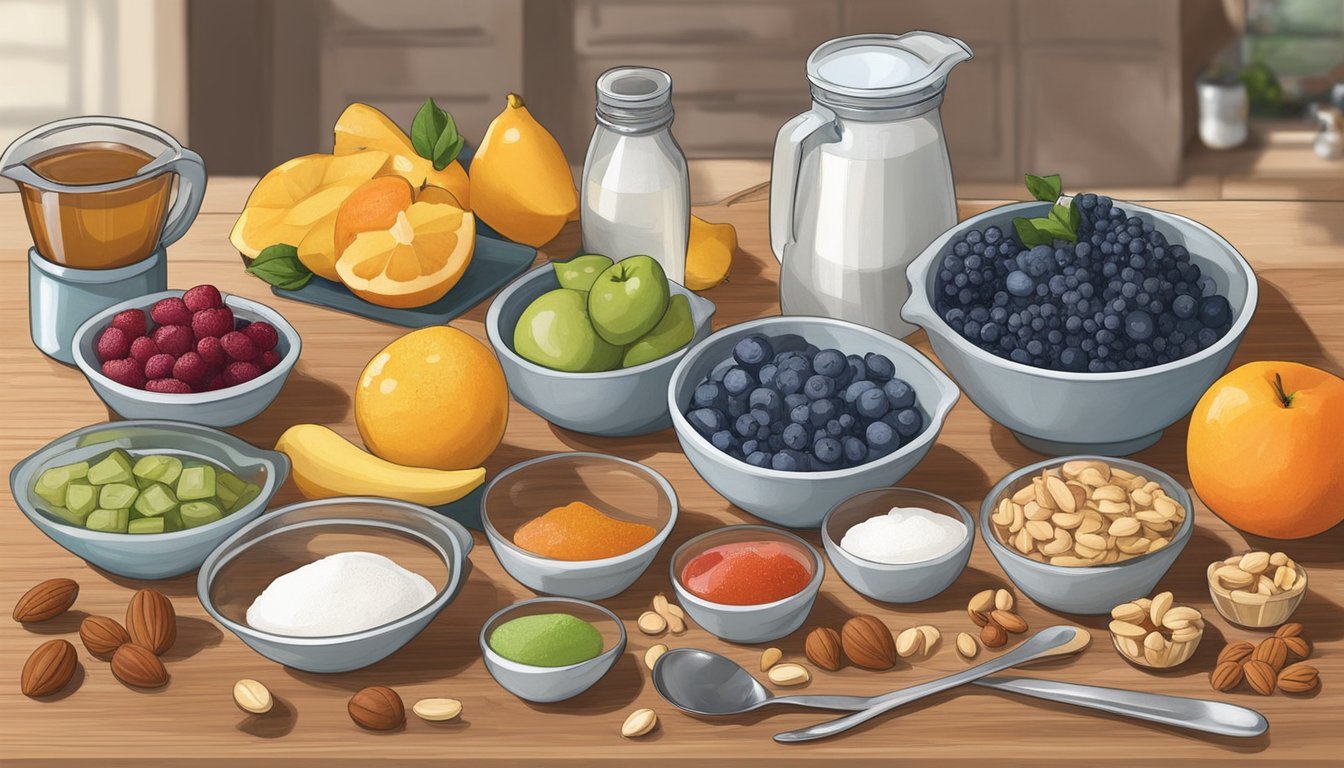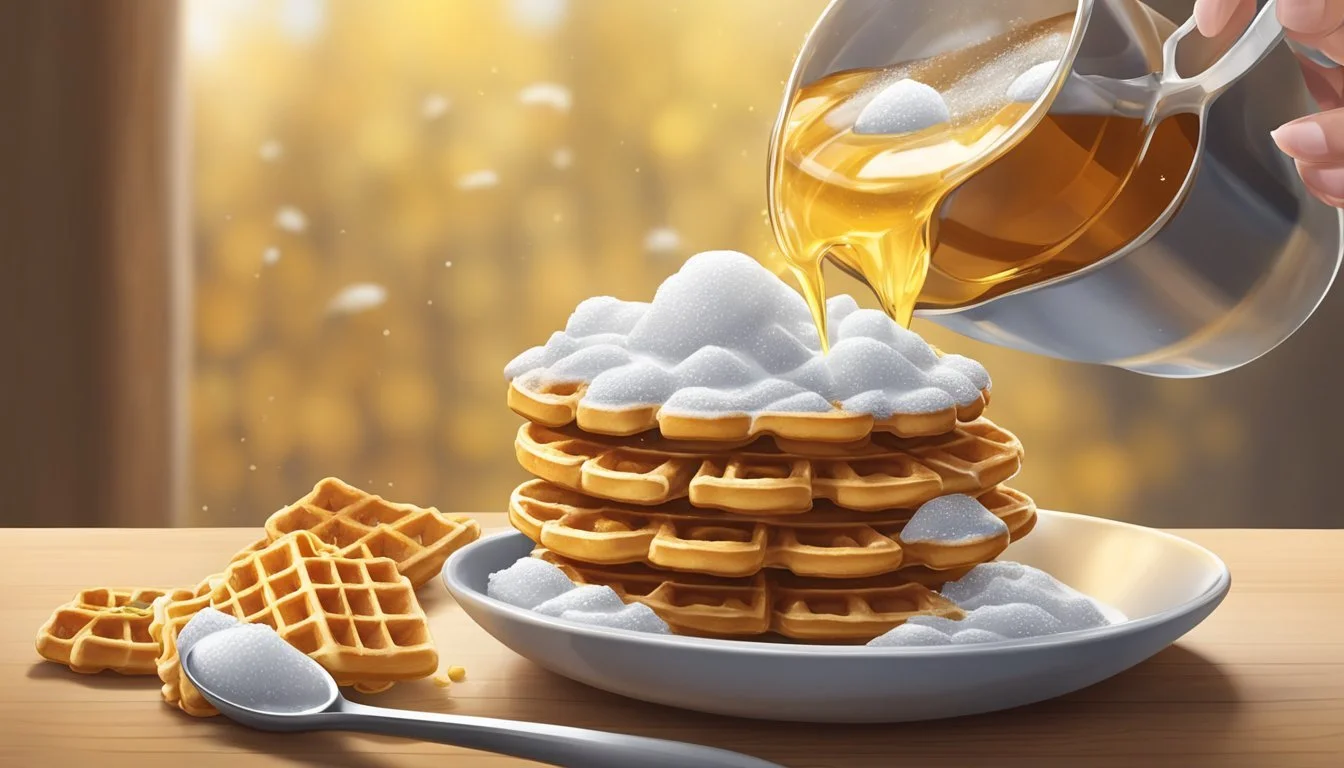How to Measure Ingredients for a Homemade Waffle Topping
Precision for Perfect Results
Measuring ingredients with precision is essential for crafting the perfect homemade waffle topping, as it is for any culinary endeavor. The accuracy of measurements can greatly affect the texture and flavor of the topping, complementing the freshly baked waffles with just the right balance. When preparing a waffle topping, whether it's a rich, buttery Bananas Foster or a simple dusting of powdered sugar and fruit, the ingredients should be measured carefully to ensure a delightful result that enhances the nuances of the waffle recipe it accompanies.
In the world of breakfast recipes, homemade waffles hold a special place, often served as a canvas for a variety of toppings, from the classic maple syrup to more elaborate concoctions. An easy waffle recipe, beloved for its convenience and simplicity, becomes a gastronomic experience with the addition of a well-crafted topping. Toppings can range from sweet, like fruit compotes or chocolate drizzles, to savory, such as herbed butter or cheese sauces. Each component's volume and weight need to be assessed accurately to create a harmonious flavor profile.
Understanding the standard units of measurement and having the right tools, such as measuring cups and spoons or a kitchen scale, is crucial for consistency. Liquid ingredients may call for the use of clear measuring jugs for an accurate reading at eye level, while dry ingredients for toppings might need sifted and leveled measures for precision. Adhering to the recipe's specified quantities is key in achieving the intended taste and form of the homemade waffle topping, ensuring that it complements the waffle base every time.
Understanding Waffle Ingredients
When crafting the perfect homemade waffle topping, one must pay close attention to the selection and measurement of ingredients. Each component plays a critical role in both the flavor and texture of the final topping.
Flour Varieties
All-purpose flour is the traditional choice for waffles due to its balanced protein content which offers both structure and tenderness. Alternatives like gluten-free flour blends provide options for those with dietary restrictions, affecting the texture and taste of the waffle.
Liquids for Batter
Whole milk is commonly used in waffle batter for its richness, but buttermilk can introduce a tangy flavor and tenderize the batter due to its acidity. Water and non-dairy alternatives can also be used, impacting the final taste and consistency.
Leaveners and Flavor Enhancers
The leavening agent, typically baking powder, is crucial for a light and airy batter. Sugar, vanilla extract, and salt enhance flavor, while spices like cinnamon add a distinctive warmth to the waffles. Each must be measured accurately to achieve the desired balance.
Additional Topping Ingredients
Toppings make waffles a culinary canvas. Maple syrup, fruit such as blueberries and peaches, chocolate chips, nuts, whipped cream, and honey are popular choices. Each topping brings additional flavors and textures that complement the base waffle.
Measuring Techniques and Tools
Consistency starts with correct measurements. Using measuring spoons and a mixing bowl, ensure ingredients like butter, sugar, and flour are measured accurately. Breadth in tools from kitchen scales to graduated pitchers can enhance precision.
Steps for Measuring Basic Toppings
Precision in measuring ingredients is crucial for creating the perfect topping for golden, fluffy waffles. Whether aiming for a crispy texture or a smooth consistency, the following methods will guide one through accurate ingredient preparation.
Using Kitchen Scales
To achieve the most precise measurements for a waffle topping, one should use a kitchen scale. This device ensures that ingredients such as nuts, fruits, or chocolate chips are weighed to the exact gram, providing consistency in flavor and texture.
Turn on the kitchen scale and ensure it is set to zero.
Place a bowl on the scale and zero it again to account for the weight of the bowl.
Weigh each topping ingredient individually, carefully adding or removing to reach the desired weight.
Volume Measurement
Volume measurement is commonly used for liquid toppings such as syrups or sauces. Using measuring cups and spoons, one can ensure that each pour is neither too scant nor too generous.
For thick liquids like honey or chocolate sauce, lightly coat the measuring tool with a neutral oil to help the liquid slide out easily.
Spoon or pour the ingredient into the measuring cup or spoon until it reaches the brim, then level it off with a straight edge for dry ingredients.
Consistency and Texture
The texture of a topping can make or break the waffle-eating experience. Ingredients must be prepared to preserve the integrity of their texture, whether one desires a crunchy, soft, or creamy addition to their breakfast.
Crumb toppings should be mixed to a sandy texture, making sure butter is evenly distributed without overworking the mixture.
For creamy toppings like whipped cream, measure out the heavy cream before whipping it to soft peaks to avoid deflating the airiness crucial for a light and fluffy texture.
Preparing Waffle Toppings
When creating homemade waffle toppings, precision in measuring ingredients ensures consistent flavor and texture. Whether aiming for sweetness, savoriness, or a bit of both, consider these subsections to guide your topping choices.
Syrup Selection
Syrups can enhance waffles with a range of flavors. For a classic taste, real maple syrup provides a natural sweetness that's hard to surpass. For a thicker, creamier consistency, buttermilk syrup can be made by combining sugar, buttermilk, and butter, brought to a boil, and then flavored with vanilla. Always use precise measurements for ingredients to maintain the balance of sweetness and richness.
Maple Syrup: Measure 100% pure syrup for an authentic taste.
Buttermilk Syrup: Use equal parts of sugar and buttermilk, and add butter to taste.
Homemade Fruit Toppings
Fresh fruit toppings add a bright, tangy contrast to waffles. Start with fresh fruit like bananas or berries, and cook them down with a little sugar or honey to create a syrupy glaze. Lemon juice can help preserve the fruit's color and add a fresh zing. For a thicker fruit compote, consider cornstarch or pectin.
Bananas: Slice and cook with a touch of honey or sugar.
Berries: Simmer with water, a sweetener, and lemon juice until thickened.
Proteins and Savory Options
Proteins can transform waffles into a hearty meal. Fried chicken atop waffles is a beloved classic, combining crispy, savory chicken with the soft sweetness of the waffle. Bacon adds a crunchy, smoky element. For an indulgent choice, sausage links or patties alongside waffles served with gravy offer a filling option. Measure proteins to fit the waffle size and compliment its dimensions.
Chicken and Waffles: A Southern favorite, often paired with syrup or gravy.
Bacon or Sausage: Offer a savory crunch or spice; serve in moderation to balance the dish.
Sweet and Dessert Toppings
For a dessert twist on waffles, toppings like chocolate chips, Nutella, or dollops of cream cheese lend a rich, creamy texture. Powdered sugar dusted over the top provides a snow-like finish. For an extra decadent treat, mini cinnamon rolls or a drizzle of melted chocolate will satisfy any sweet tooth.
Nutella or Chocolate Chips: Use sparingly to swirl or sprinkle over waffles.
Dessert Creams: Apply cream cheese or whipped cream in dollops to avoid overwhelming the waffles.
Advanced Toppings Preparation
When making homemade waffle toppings, precise ingredient measurement and proper technique can elevate a simple waffle to a gourmet brunch (What wine goes well with brunch?) item. Advanced preparation of compotes, sauces, and butter enhancements adds a layer of sophistication to your waffles.
Preparing Compotes and Sauces
To prepare fruit compotes and sauces, one must start by selecting fresh fruits or berries. For a berry compote, combine 1 cup of mixed berries, a tablespoon of granulated sugar, a squeeze of fresh lemon juice, and a tablespoon of water in a saucepan over medium heat. Stirring continuously, one must let the mixture simmer until it thickens, usually around 10-15 minutes. For a richer flavor, incorporating a spoonful of honey or a dollop of lemon curd can offer a delightfully complex twist.
Ingredients for Berry Compote:
1 cup mixed berries
1 tbsp granulated sugar
1 tbsp fresh lemon juice
1 tbsp water
Optional: honey/lemon curd
Whipping Cream and Butter Enhancements
Enhancements to whipped cream and butter require starting with quality ingredients such as cold whipping cream or room temperature unsalted butter. For whipped cream, chill a bowl and whisk attachment in advance. Whip 1 cup of heavy cream until soft peaks form, then gradually add 2 tablespoons of sugar while continuing to whisk. The result should be a light and airy topping. A savory twist on traditional melted butter can be achieved by blending unsalted butter with additions like herbs or spices, which complements savory waffle toppings.
1 cup heavy cream
2 tbsp sugar
Herb-Infused Butter:
1/2 cup unsalted butter, softened
1/4 tsp of chosen herbs or spices
Alternative Topping Ideas
Exploring alternative topping ideas can bring uniqueness to each waffle dish. Nut butters such as peanut butter offer protein and a creamy texture. They can be warmed slightly, making them drizzle-able over waffle squares. For traditional sweet toppings, consider toasting nuts for added crunch or experimenting with different types of syrups such as maple or agave.
Savory Toppings:
Nut butters (e.g., peanut)
Toasted nuts
Specialty syrups
One should always consider the texture and flavor balance, ensuring that the waffle batter and the waffle maker settings are calibrated to produce the best crispy and fluffy waffles suited for the chosen toppings.
Serving and Presentation Tips
When presenting waffles for brunch or a family gathering, the serving method and arrangement of toppings can turn a simple meal into an exquisite experience. The key lies in showcasing golden, fluffy waffles topped with an enticing mix of fresh fruit and other toppings, presented on suitable serveware.
Plating Waffles and Toppings
After cooking waffles in a waffle iron to a golden crispness, transfer them to a wire rack or cooling rack. This prevents waffles from becoming soggy, preserving their desirable fluffy texture. Plating them while warm is integral. Place waffles centrally on a plate to form a foundation for the toppings. The waffles themselves should be the star; any accompanying toppings play a supporting role in enhancing their appeal.
Topping Quantity and Arrangement
Optimal topping quantities ensure each bite of waffle includes a medley of flavors without overwhelming the waffle itself. Consider the following guideline for topping distribution:
Fresh Fruit: 1/4 to 1/3 cup per waffle
Syrups and Sauces: 1 to 2 tablespoons
Whipped Cream or Yogurt: A dollop centered
Nuts or Other Crunchy Toppings: 1 to 2 tablespoons sprinkled
For arranging toppings, begin with syrups or sauces, drizzling them in a zigzag pattern for an appealing visual. Fresh fruit should be evenly distributed to provide a burst of color and taste with every portion. A final flourish, like a modest sprinkle of powdered sugar or a small mound of whipped cream, adds elegance. If dealing with leftover waffles or making a double batch for later, store extra portions in the fridge or freezer and reheat them on a rack in the oven to preserve their texture for serving.
Storing and Preserving Waffle Toppings
Proper storage techniques are pivotal to maintaining the freshness and flavor of homemade waffle toppings. Whether preserving for a family brunch or for future use, understanding the correct methods ensures that these delightful accompaniments remain safe and delicious to enjoy.
Refrigeration Best Practices
Refrigeration is ideal for perishable waffle toppings like fruit compotes and dairy-based sauces. One should:
Store in airtight containers to prevent the absorption of other food odors.
Label containers with the date of storage; most toppings last up to 5 days refrigerated.
Use a cooling rack to ensure leftovers reach ambient temperature before refrigeration.
Freezing Techniques
Freezing is a commendable option for extending the shelf life of waffle toppings:
Pure fruit sauces or butters can be frozen. Pour into ice cube trays for single servings, then transfer to freezer bags.
For cream-based toppings, add an emulsifier like lecithin to maintain texture upon thawing.
Thaw toppings in the refrigerator overnight, or use a cooling rack at room temperature for quick use.
Reviving Leftover Toppings
Revitalization of leftover toppings can restore them to their peak condition:
For toppings that have separated, a quick whisk can often bring them back together.
Reheat butter and sugar-based toppings on low heat, stirring constantly to prevent burning.
To maintain the quality of leftover waffles, reheat them on a cooling rack inside a warm oven to keep them crispy.
Alternative Dietary Considerations
When creating homemade waffle toppings, it's crucial to cater to various dietary needs. This section explores how to measure ingredients for alternative toppings, keeping gluten-free, dairy-free, and vegan diets in mind.
Gluten-Free Topping Variations
For a gluten-free waffle topping, one must ensure that all ingredients used are free of gluten. A popular base for such toppings can be a gluten-free flour blend, combining ingredients like rice flour, tapioca flour, and xanthan gum for structure.
Vanilla: Ensure that the vanilla extract used is gluten-free; about 1 teaspoon is appropriate for most recipes.
Gluten-free flour blend: Use in place of regular flour for thickening sauces, measuring in a 1:1 ratio.
Dairy-Free Options
Dairy-free toppings require substitutes for milk-based ingredients that provide similar taste and texture.
Calcium-fortified plant milk: Use in place of cow's milk to provide calcium; measure equal parts as one would with dairy milk.
Coconut cream: A rich alternative to dairy cream, ideal for making dairy-free whipped toppings in 1:1 ratio.
Vegan Topping Substitutes
Vegan toppings avoid all animal products, including dairy and eggs.
Agave syrup or maple syrup: These natural sweeteners can replace honey measure-for-measure.
Aquafaba: This is the liquid from canned chickpeas, and when whipped, it can replace egg whites. Use 3 tablespoons of aquafaba to replace one egg white.
By carefully measuring these alternative ingredients, one can create delicious and inclusive toppings for gluten-free waffles without compromising on taste or texture.
Kitchen Equipment and Maintenance
Precision and care in selecting and maintaining kitchen equipment are crucial for creating the perfect homemade waffle topping.
Choosing the Right Waffle Iron
A reliable waffle iron is the foundation of any waffle-making setup. One should opt for a waffle maker that heats evenly and offers adjustable temperature settings to ensure consistent results. Preheating the waffle iron is a step that cannot be skipped, as a properly heated waffle iron guarantees a well-cooked waffle with a crisp exterior. Models vary, so one must find a waffle maker that suits individual preferences for thickness and crispness of waffles.
Essential Cooking Tools
Several tools are essential for measuring ingredients accurately when preparing waffle toppings:
Measuring Spoons: For precise measurements of smaller quantities such as baking powder or salt.
Mixing Bowl: A large bowl is necessary for combining the topping ingredients thoroughly.
Whisk: To mix the wet and dry ingredients smoothly and incorporate air for a fluffy texture.
It's advisable to lightly coat the waffle iron with nonstick cooking spray or vegetable oil to prevent the waffle from sticking and to ease cleanup.
Cleaning and Caring for Equipment
Regular maintenance ensures longevity and consistent performance of kitchen equipment. After using the waffle iron, it should be unplugged and allowed to cool completely before cleaning. A soft, damp cloth is usually sufficient for wiping down the plates. For other equipment like mixing bowls and whisks, they should be washed with warm, soapy water, rinsed, and dried immediately to prevent rust or damage. It is important to avoid abrasive cleaners or metal utensils that could damage the nonstick surface of the waffle maker.
Fun and Creative Topping Ideas
Creating a variety of homemade waffle toppings allows for a customizable and enjoyable dining experience, whether for a casual weekend breakfast or a festive brunch. This section explores setups for events, options that will delight children, and seasonal variations to elevate the traditional waffle to a delightful dessert or celebrated family meal.
Waffle Bar Setup for Events
For events, one can design a waffle bar that guests can approach with anticipation. Organize toppings in separate containers with clear labels. Offer a selection of spreads such as peanut butter, a variety of fruits like sliced bananas, and sweet essentials including chocolate chips and maple syrup. Ensure that utensils are readily available for guests to serve themselves efficiently.
Kid-Friendly Topping Combinations
When considering children, it's essential to include fun and familiar flavors in the topping selection. A hit with the younger crowd often includes miniature chocolate chips, dollops of peanut butter, or even slices of banana for a playful twist on pancakes or waffles. One can also cut fruits into fun shapes to make the dish visually appealing and encourage kids to enjoy a mix of flavors.
Seasonal Topping Inspirations
Adapting to the seasons can transform waffles into a festive centerpiece for a family brunch or dessert. In autumn, toppings such as pumpkin puree with a sprinkle of cinnamon can capture the essence of the season. For summer months, incorporating a berry compote with fresh fruits offers a refreshing and lighter option. Reflecting the season in one's choice of waffle toppings not only provides variety throughout the year but also embraces the seasonal produce available.
Troubleshooting Common Topping Errors
When crafting the perfect topping for waffles, chefs need to focus on achieving the right texture and flavor balance. Below are strategies for rectifying common errors in order to ensure a delightful complement to both Belgian and classic waffle varieties.
Texture Issues and Fixes
A topping with an undesirable texture can ruin the delicate crisp exterior and fluffy interior of waffles. Here are common texture issues and how to fix them:
Syrup Too Thin or Thick: If the syrup is too runny, it can make the waffles soggy. Thicken it by cooking the syrup over low heat to reduce excess water. If the syrup is too thick, thin it by adding a small amount of warm water and stir until it reaches the desired consistency.
Cream Topping:
Too Stiff: Overwhipping cream can create a buttery consistency. To fix this, gently fold in additional liquid cream by the tablespoon until the correct texture is achieved.
Not Stiff Enough: Under-whipping cream leaves it runny. Continue to whip, checking every few seconds to reach soft peaks that hold their shape without dripping.
Flavor Balancing
The taste of waffle toppings should complement the waffle batter without overpowering it. Use these tips to balance flavors effectively:
Overly Sweet: To counteract excessive sweetness, add a pinch of salt to enhance other flavors or a small amount of citrus zest to provide a tangy contrast.
Not Sweet Enough: Increase sweetness carefully with sugar or honey, mixing and tasting incrementally. Remember, it's easier to add more than to fix an overly sweet topping.
Flavor Depth: Elevate simple sweet toppings by incorporating spices like cinnamon or vanilla extract. Start with small amounts as these can be very potent; your goal is a harmonious flavor that accentuates the golden, crisp exterior of the waffles.
Conclusion
When preparing homemade waffles for breakfast or brunch, accurate measurement of ingredients is key to achieving the perfect flavor and texture. To ensure ease and success in your recipe, follow these tips:
Measuring Liquid Ingredients: They should be measured in clear measuring cups with spouts to ensure precision. For instance, milk or vanilla extract needs an exact measure to impart the right taste and consistency.
Spoon & Level Dry Ingredients: Spoon the flour or baking powder into the measuring cup and level it off with a straight-edge tool. This ensures that waffles aren’t too dense or too light.
Using Scales for Accuracy: For enthusiasts seeking consistency in their weekend breakfast, a kitchen scale can provide the most accurate measure for ingredients, guaranteeing the same delicious results every time.
Organizing Ingredients: Have all the toppings and batter components measured and arranged before starting. This "mise en place" not only simplifies the cooking process but also ensures that nothing is forgotten in the excitement of cooking.
When these guidelines are followed, one can confidently prepare a delightful homemade waffle topping. The outcome is often a delightful treat, perfect for an easy and enjoyable weekend breakfast or brunch.


